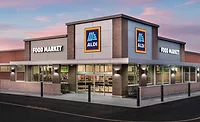Online grocery shopping poised for growth
Fresh foods impact consumers’ decision to use eCommerce
Although it had only been three years since my last newborn child, the baby industry has churned out its latest and greatest group of swaddles, bassinets and much more to help moms cope through sleeping challenges associated with the newborn phase. However, the best addition available to me this time around is not so much a product, but a service.
So that I didn’t have to lug around a three year old and infant at the grocery store, my husband and I decided to investigate what online grocery options were available to us. Our favorite grocery store offers delivery for locals and click-and-collect for those like us who will travel the extra distance to shop there. We also signed up for delivery service from the local mass merchandisers in our area.
Overall, the ability to utilize eCommerce for my food and beverage purchases was a valuable tool during my maternity leave. It seems as if I am not the only one enjoying the benefits of online shopping.
As part of its Bringing to Life: Trop Trends in Fresh Foods webinar series, Information Resources Inc. (IRI) and the Food Marketing Institute detailed the impact of eCommerce in webinar episode three titled “New Consumerism & the Customization Continuum.” According to the presentation, consumable eCommerce penetration continues to grow because of usage among repeat buyers. However, IRI data shows that among U.S. consumers, approximately 30 percent are using this retail platform — meaning that 70 percent of shoppers have yet to buy groceries online.
Among the reasons that consumers don’t utilize eCommerce grocery shopping is related to fresh food offerings, IRI data states. Citing data from the December 2017 IRI Fresh Foods Survey, the webinar noted that 36 percent of U.S. consumers would buy fresh foods online if faster delivery was offered. For millennials, the statement was true for 45 percent. Another data point stated that 33 percent of U.S. consumers want fresh foods as part of in-store grocery pick up. Again this was higher among millennials, with 44 percent indicating as such.
In line with these statements, the webinar highlighted how more retailers are innovating in eCommerce order and delivery. For example, Amazon and Whole Foods Market introduced two-hour delivery through Prime Now, and Walmart is expanding its online grocery delivery option to more than 40 percent of U.S. households.
Just as important as grocery delivery is to the future of food retailers, click-and-collect models look to have a growing influence. IRI forecasts that food and beverage purchases through click-and-collect will total more than $6.6 billion in 2020 — up from $400 million in 2016.
No matter what their reasons might be, it seems as though a growing number of consumers will be employing eCommerce for their grocery services. Retailers now are tasked with ensuring they are meeting consumers’ expectations in this evolving market.
Looking for a reprint of this article?
From high-res PDFs to custom plaques, order your copy today!






